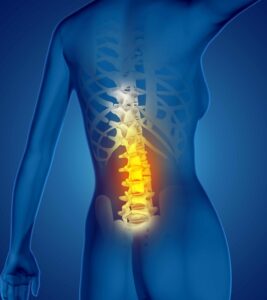Nucleoplasty is a minimally invasive procedure designed to treat chronic back pain caused by herniated or bulging spinal discs, offering a less aggressive alternative to traditional open surgery. By using radiofrequency energy to decompress the disc, nucleoplasty reduces pressure on surrounding nerves, alleviating pain and improving mobility without extensive tissue damage. This nucleoplasty procedure is particularly suitable for patients who have not responded to conservative treatments like physical therapy or medications after at least six weeks. Consider it when symptoms include persistent radicular pain, numbness, or weakness in the legs, but only after a thorough evaluation confirms a contained disc herniation. With a nucleoplasty success rate often exceeding 70%, it provides quick relief and minimal downtime, making it an ideal option for those seeking to avoid the risks of major nucleoplasty surgery.[1][2]

What Is Nucleoplasty?
Nucleoplasty, also known as percutaneous disc decompression, is an advanced, minimally invasive treatment for spinal disc issues, particularly lumbar or cervical herniations that cause chronic pain. Unlike traditional nucleoplasty surgery, which involves incisions and removal of disc material, this procedure uses a specialized wand that delivers controlled radiofrequency energy to vaporize a small portion of the disc’s inner nucleus. This creates channels within the disc, reducing its volume by up to 10-20% and relieving pressure on compressed nerves.[3] Developed in the early 2000s, nucleoplasty leverages coblation technology—a process that operates at low temperatures (40-70°C) to minimize damage to surrounding tissues—making it safer and more precise than laser or mechanical decompression methods.[4]
The core principle behind nucleoplasty is to address discogenic pain without destabilizing the spine. Herniated discs occur when the soft, gel-like nucleus pulposus pushes through the tougher annulus fibrosus, irritating nearby nerves and causing sciatica or radiculopathy. By shrinking the nucleus, nucleoplasty restores disc height and promotes natural reabsorption of the herniated material, often leading to long-term symptom relief.[5] Clinical studies have shown that this approach is effective for contained herniations—those where the disc material remains within the annulus—rather than extruded or sequestered fragments.[6] Patients typically experience reduced inflammation and improved function, with many returning to daily activities much sooner than with open procedures.
One key advantage of nucleoplasty is its outpatient nature. Performed under local anesthesia with fluoroscopic guidance, the entire nucleoplasty procedure lasts 20-45 minutes, involving only a small needle insertion—no stitches or hospitalization required.[7] This makes it accessible for a wide range of patients, including those with comorbidities who might not tolerate general anesthesia. However, it’s not a cure-all; success depends on accurate diagnosis via MRI and patient selection. Ongoing research continues to refine its applications, with recent studies exploring its use in cervical discs for radicular arm pain.[8]
How Is Nucleoplasty Performed?
The nucleoplasty procedure is a straightforward, image-guided intervention that prioritizes precision and minimal disruption. It begins with a comprehensive pre-procedure evaluation, including MRI scans to confirm the herniation type and location, ensuring it’s a contained disc suitable for decompression.[4] Patients are positioned prone on a fluoroscopy table, and local anesthesia is administered to numb the skin and deeper tissues along the needle’s path.
Step one involves inserting a thin introducer needle through the skin into the affected disc, typically at the posterolateral approach to avoid major structures. Fluoroscopy or CT guidance provides real-time imaging, allowing the surgeon to advance the needle accurately into the nucleus pulposus without breaching the annulus.[9] Once positioned, a specialized coblation wand—about the diameter of a pencil—is threaded through the needle. This device features bipolar electrodes that generate a plasma field, ablating tissue at a molecular level.
In steps two through five, the wand is activated to create multiple channels (usually four to six) within the disc. It alternates between ablation mode, which vaporizes nuclear material, and coagulation mode, which seals any minor bleeding. Each pass removes approximately 0.2-0.5 grams of tissue, totaling 10-18% volume reduction—enough to decompress without compromising disc integrity.[6][4] The low-temperature process (around 60°C) prevents thermal damage to nerves or cartilage, a common risk in older radiofrequency techniques.
Finally, the wand and needle are withdrawn, and a small bandage is applied. Patients are observed for 1-2 hours before discharge, with immediate pain relief reported in up to 50% of cases due to reduced intradiscal pressure.[10] The entire nucleoplasty surgery avoids general anesthesia, reducing risks like infection or prolonged recovery. Complication rates hover below 2%, including rare instances of transient soreness or discitis.[2]
Who Is a Good Candidate for Nucleoplasty?
Ideal candidates for nucleoplasty are adults aged 30-60 with chronic low back or neck pain stemming from a single-level, contained disc herniation, confirmed by imaging.[4] They should have failed at least 6-12 weeks of conservative therapy, including anti-inflammatories, epidural injections, and physical therapy, yet exhibit no severe neurological deficits like foot drop or bowel incontinence.[1] Smokers or those with high BMI may still qualify if disc height remains above 50%, but optimization through lifestyle changes is advised.
Not everyone fits the profile: patients with extruded herniations, significant spinal stenosis, or prior spinal fusions are typically excluded, as nucleoplasty targets only intradiscal pressure.[2] Those with radicular pain (shooting down limbs) often see the best outcomes, with studies showing 70-80% improvement in leg symptoms.[5] A thorough consultation, including discography if needed, helps tailor the decision, ensuring nucleoplasty aligns with individual anatomy and pain patterns.
When Is Nucleoplasty the Right Option?
Nucleoplasty shines as a mid-tier intervention when conservative measures fall short but open surgery feels too extreme. It’s optimal for subacute to chronic discogenic pain lasting over three months, where MRI reveals a bulging or protruded disc impinging on nerves.[5] Consider it for active individuals—office workers, athletes, or parents—who need swift relief without weeks of downtime. In cases of failed epidural steroids, nucleoplasty’s targeted decompression offers a 60-80% chance of avoiding escalation to discectomy.[1]
Timing matters: early intervention (within 6-12 months of symptom onset) yields higher nucleoplasty success rates, as discs are less degenerated.[2] It’s less ideal for acute injuries or multilevel disease, where multidisciplinary approaches like fusion might be needed. Ultimately, shared decision-making with a spine specialist, weighing risks like reherniation (10-20%), guides its appropriateness.[2]
Is Nucleoplasty Effective for All Types of Disc Herniations?
No, nucleoplasty is most effective for contained or protruded herniations, where the disc material hasn’t fully ruptured.[6] Studies indicate 75-85% efficacy for lumbar protrusions under 6mm, but drop to 50% for sequestered fragments due to incomplete decompression.[3] Cervical applications show similar patterns, with foraminal herniations responding well (70% VAS reduction) but central ones less so.[8] For non-contained types, alternatives like microdiscectomy outperform, highlighting the need for precise imaging-based selection.[10]
How Can You Prevent Nucleoplasty Complications?
Complications from nucleoplasty are rare (under 2%), but prevention starts with patient education and adherence.[2] Pre-procedure, disclose allergies or infections to avoid discitis; post-procedure, maintain hygiene at the insertion site and follow antibiotic protocols if prescribed.[2] Stay hydrated and avoid NSAIDs initially to prevent bleeding risks. Long-term, core strengthening exercises reduce reherniation odds by 30%.[4] Monitor for red flags like fever or worsening numbness, seeking immediate care to mitigate issues like hematoma.
When Does the Pain Go Away After Nucleoplasty?
Pain relief varies: 40-60% of patients notice improvement within 24-72 hours as inflammation subsides, with full effects peaking at 4-6 weeks.[9] Studies report VAS scores dropping from 7.5 to 3.0 by week one, stabilizing at 2.0-2.5 by month three.[9] Transient soreness at the site may last 7-10 days, but radicular pain often resolves faster than axial back pain.[10] Factors like disc size influence timelines—smaller herniations heal quicker.
What Are the Benefits of Nucleoplasty Treatment?
Nucleoplasty’s benefits extend beyond pain relief: it boasts a 70-80% nucleoplasty success rate for eligible patients, with sustained VAS reductions up to 24 months.[2][5] Minimal tissue trauma means lower infection risk (0.5%) and no scarring, preserving spinal stability.[4] Patients resume work in 1-2 weeks, versus 6-8 for open surgery, cutting costs by 50-70%.[7] Functionally, ODI scores improve by 40-60%, enhancing quality of life.[2] As an outpatient option, it minimizes psychological burden, fostering quicker mental recovery.
What Does the Nucleoplasty Recovery Process Look Like?
Nucleoplasty recovery time is remarkably short, with most patients ambulatory within hours.[7] Day one focuses on rest: ice the site, take prescribed analgesics, and avoid driving. By day three, light walking promotes circulation without strain.[4] Weeks one to two involve gradual activity ramp-up—desk work resumes, but no lifting over 5kg. Physical therapy starts at week two, emphasizing posture and flexibility.
By month one, 80% report 50% symptom relief, with full integration into routines by 6-8 weeks.[9] Monitor progress via pain diaries; setbacks like flare-ups are managed with short rest. Long-term, 90% maintain gains at one year, underscoring its durability.[5]
When Should You Go for a Nucleoplasty Follow-Up Appointment?
Schedule your first follow-up 1-2 weeks post-procedure to assess pain, mobility, and any redness.[2] Month one checks healing via exam or repeat MRI if needed. Quarterly visits up to six months track nucleoplasty success rate metrics like ODI.[4] Annual check-ins ensure no recurrence, especially for high-risk patients.
Where Can You Get Nucleoplasty Treatment?
In Turkey, nucleoplasty is performed in Samsun and Antalya by Associate Professor Ömer Bozduman. He offers high-quality care, with competitive nucleoplasty price Turkey ranging from $5,000 to $8,800, including surgeon fees and imaging, 25-40% lower than Western counterparts. The clinic offers packages with English-speaking staff and a success rate that meets international standards.
What Should You Do Before and After Nucleoplasty?
Preparation and aftercare are pivotal for optimal outcomes. Hydrate well, fast if sedation is used, and arrange transport—no solo driving post-procedure.
Things to Prepare Before Nucleoplasty Treatment
Arrange a symptom log for your doctor; stop blood thinners two weeks prior under guidance.[4] Stock pain meds, loose clothing, and ice packs. Quit smoking for better healing, and complete pre-op labs/MRI.[2]
Aftercare Tips for a Smooth Nucleoplasty Recovery
Rest supine initially; walk short distances daily. Avoid baths for 48 hours, use showers only.[4] Eat fiber-rich foods to prevent constipation from meds. Attend PT promptly, and report fevers immediately.
What Kind of Exercise Routine Should You Follow After Nucleoplasty?
Post-nucleoplasty, adopt a phased exercise routine to rebuild strength without reinjury. Start with low-impact aerobics like swimming or stationary biking at week two, 20 minutes thrice weekly.[9] Incorporate core stabilizers: planks (modified) and bird-dogs from week four, progressing to 3 sets of 10. Yoga poses like child’s pose aid flexibility by month two.[4] Aim for 150 minutes moderate activity weekly by three months, guided by PT.
Which Movements Should Be Avoided During Nucleoplasty Healing?
Steer clear of forward bends, twists, or heavy lifts (>10kg) for 4-6 weeks to protect the disc.[4] No high-impact sports like running until eight weeks; avoid prolonged sitting. These precautions cut reherniation risk by 40%.[2]
In summary, nucleoplasty offers a transformative option for disc-related pain, balancing efficacy with convenience. With proper selection and adherence, its benefits far outweigh risks, empowering patients toward pain-free lives. Consult a specialist to explore if it’s right for you.
References
- Gerges FJ, Lipsitz SR, Nedeljkovic SS. A systematic review on the effectiveness of the nucleoplasty procedure for discogenic pain. Pain Physician. 2010;13(2):117-132.
- Manchikanti L, et al. Comprehensive review of percutaneous disc decompression procedures. Pain Physician. 2010;13(3):279-300.
- Sharps L, Isaac Z. Percutaneous disc decompression using nucleoplasty. J Spinal Disord Tech. 2002;15(5):345-350.
- Singh V, et al. Percutaneous disc decompression using coblation (nucleoplasty) in the treatment of chronic discogenic pain. Pain Physician. 2002;5(3):250-259.
- Boswell MV, et al. A systematic review of therapeutic interventions for discogenic back pain. Pain Physician. 2007;10(2):229-245.
- Andreula C, et al. Percutaneous nucleoplasty for disc decompression: indications and outcomes. AJNR Am J Neuroradiol. 2004;25(8):1317-1322.
- Mirzai H, et al. Nucleoplasty for the treatment of lumbar discogenic pain: a prospective study. Spine J. 2007;7(3):325-330.
- Cesaroni A, Nardi PV. Plasma disc decompression for contained cervical disc herniation: a randomized, controlled trial. Eur Spine J. 2010;19(3):477-486.
- Al-Zain F, et al. Percutaneous nucleoplasty: technical considerations and clinical outcomes. J Neurosurg Spine. 2009;11(6):753-759.
- Azzazi A, et al. Early outcomes of nucleoplasty in patients with discogenic low back pain. Pain Med. 2011;12(8):1277-1283.



